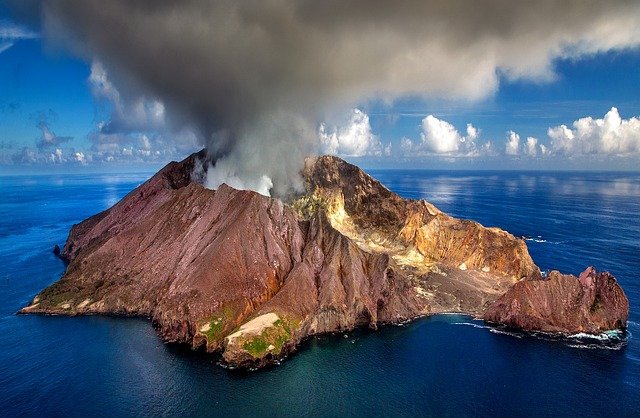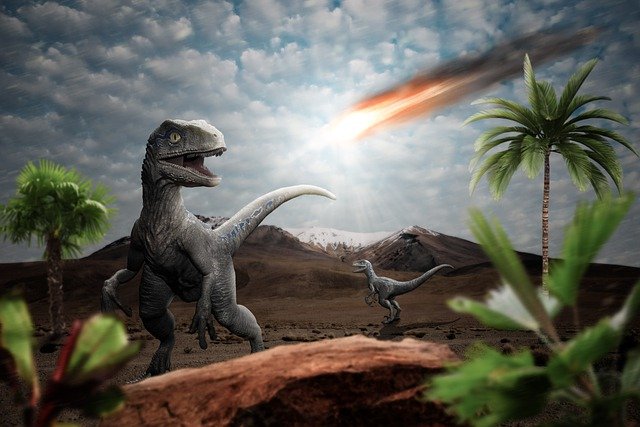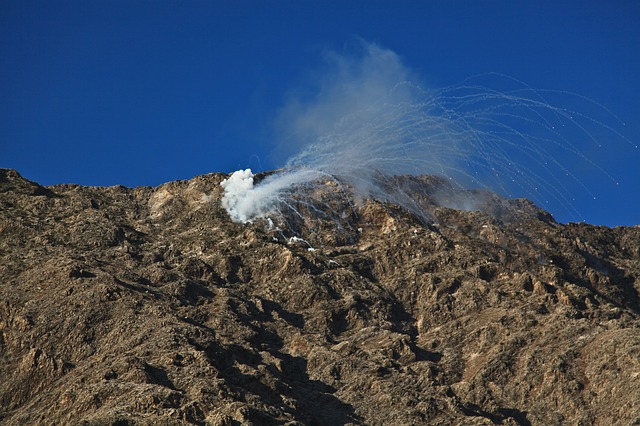In several billion years, the Earth will end inexorably absorbed by the Sun transformed into a red giant. By then, humanity will certainly be long gone. It remains to be seen how …
It was to occur in 1999. Then, in 2008 or in 2012 . Maybe, finally, for 2060? For several centuries, prophets and other gurus have regularly predicted the end of the world . Biblical flood, alien invasion or Armageddon, everyone has their own smoky theory. A little more elaborate, Hollywood films are also very imaginative in destroying Humanity, from Interstellar to The Planet of the Apes via The Day After . There are, however, real probabilities of seeing the human species disappear early. Here are the most serious scientific hypotheses.
A volcanic supereruption causes a permanent winter

Every 100,000 years or so, there is a supereruption capable of destroying solar radiation for several years. Hundreds of cubic kilometers of ash and rocks are thrown into the atmosphere, plunging the planet into permanent winter, preventing any plant from growing, causing famines and epidemics. About thirty supervolcanoes in the world would be likely to cause such a catastrophe. In 2017, researchers at Arizona State University warned of a possible awakening of Yellowstone, in the USA. However, it is unlikely that the phenomenon will be massive enough to cause the entire extinction of humanity.
A giant meteorite

A giant meteorite about ten kilometers in diameter crosses Earth’s orbit every 100 million years or so. Releasing an energy equivalent to five billion times the Hiroshima bomb, such a collision ignites the atmosphere at more than 1,000 ° C and causes tsunamis several hundred meters high. This is the most commonly advanced explanation for the end of the dinosaurs, 66 million years ago.
Even more dangerous: the disintegration of a giant comet causing a succession of mega-impacts. Rest assured: experts from NASA and ESA are working hard to find a way to deflect the asteroids threatening the planet.
An inexorable demographic decline?

At the current rate, there will be no more Japanese in the year 3000, warned in 2006 by the National Institute of Population and Security Research, under the Japanese Ministry of Health. In question, a fertility rate of barely 1.41 children per woman. It is not the only country threatened by demographic extinction: South Korea, whose fertility rate does not exceed 1.26, could also disappear by the year 2500. In Europe, Romania, Poland, and Italy are on the same slope despite the birth rate policies launched in these countries. In 2003, the United Nations made an estimate of the world population in the year 2300: according to the projection of a stabilized fertility rate, in the low range, it would be 2.3 billion;
In a hypothesis where the fertility rate would be frozen at the current constant rate for the next 3 centuries, this figure would be… 134,000 billion! But how to be able to project so far, between implosion and demographic explosion? Because, apart from cultural factors, it is also disregarding the demographic decline resulting from a fall in human fertility. A 2017 study showed that the average sperm count of men in the most industrialized countries of the world had fallen by half in 40 years.
Global warming makes the earth unlivable

By 2100, most of the countries in the Persian Gulf could become uninhabitable as a result of global warming. According to MIT, the northern Chinese plain, which has the largest concentration of humans on the planet, could, in turn, become customary to scorching heatwaves by 2070.
“With a temperature above 35 ° C and a humidity of 100% preventing any evaporation, people die in just six hours,” say the researchers. The heat reached in Pakistan, India, or Bangladesh could again “exceed the capacity of the human organism to survive without protection.” Will we be able to accommodate all these future migrants in Siberia or in Canada?
Widespread nuclear war

In 2018, there are more than 14,000 nuclear weapons in the world, according to the organization Plowshares Fund. In 2014, a study by the American Geophysical Union showed that a simple regional nuclear conflict between India and Pakistan would project five million tons of carbon into the atmosphere, causing a widespread drop in temperatures on the planet and significant degradation of the ozone layer which could lead to a veritable “nuclear famine.”
Suffice to say that a generalized war would have been large enough to eradicate humanity. The consequences could be even worse if one used a “salt bomb” (or dirty bomb) of cobalt-59, a radioactive isotope capable of rendering the stricken area uninhabitable for at least a century. Enough to approve the supporters of global disarmament.
Global famine triggered by declining biodiversity

The dramatic decline in biodiversity could ultimately pose a threat to our food. The Food and Agriculture Organization of the United Nations (FAO ) warns today today today, 75% of the planet’s food comes from barely 12 plant species and five animal species. Barely three bowls of cereal (rice, corn, wheat) alone produce 60% of the calories and proteins consumed by humans.
A disease affecting these varieties could therefore lead to widespread famine. In the XVIII century, mildew has so decimated the fields of Potatoes in Ireland, causing the death of a million people. In the field of fishing, many stocks are largely overexploited. There may not be any fish left in Asia-Pacific by 2048, according to IPBES.
An uncontrollable epidemic

A great classic of Hollywood films, the destructive virus eradicating humanity in a few weeks is also one of the favorite themes of conspirators. In March 2018, the World Health Organization alerted to a mysterious “Disease X”, capable of causing a global pandemic “never seen”.
This future disease could come from a genetic manipulation accident, a terrorist act, or a leak from a laboratory, but it is more likely to arrive in humans through animal transmissions, such as the Ebola virus or the H1N1 flu. . However, it is unlikely that a virus will succeed in eradicating the whole of humanity: it never has an interest in killing all the infected hosts because, in this case, it can no longer reproduce and continue. its expansion.
A cosmic bombardment

The collision between two neutron stars and the explosion of a black hole would produce formidable gamma-ray bursts. These massive fluxes of gamma rays ionize molecules in the atmosphere, destroying the ozone layer. Without this protective screen, the dose of UVB rays would reach a level lethal for phytoplankton, at the base of the food chain, and responsible for half of the photosynthetic activity of the planet.
Such a gamma-ray burst is undoubtedly at the origin of the great extinction of the Ordovician, 450,000 million years ago, when about 60% of marine invertebrate species suddenly disappeared. It is also necessary for a gamma-ray burst to cross the orbit of the Earth in a sufficiently close perimeter, which remains highly improbable.